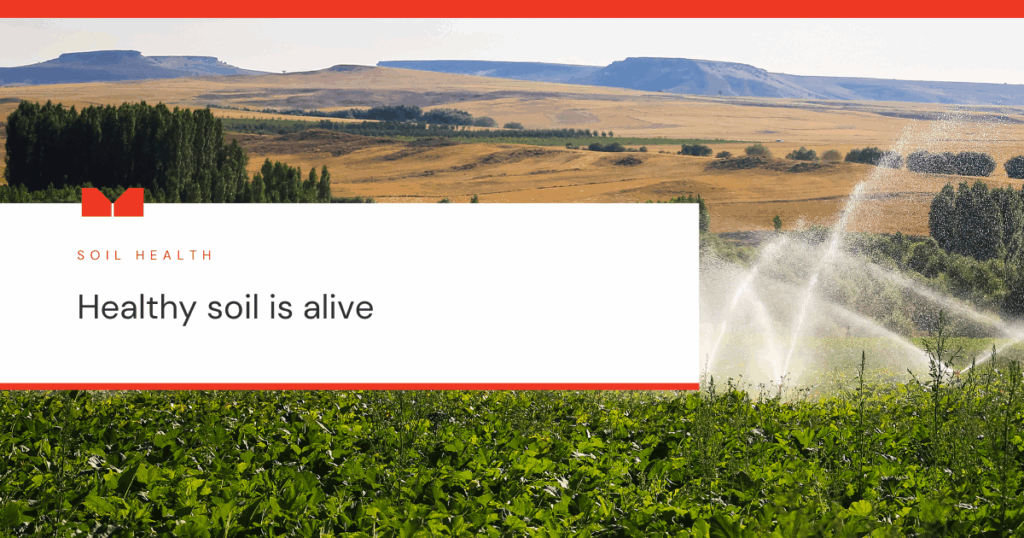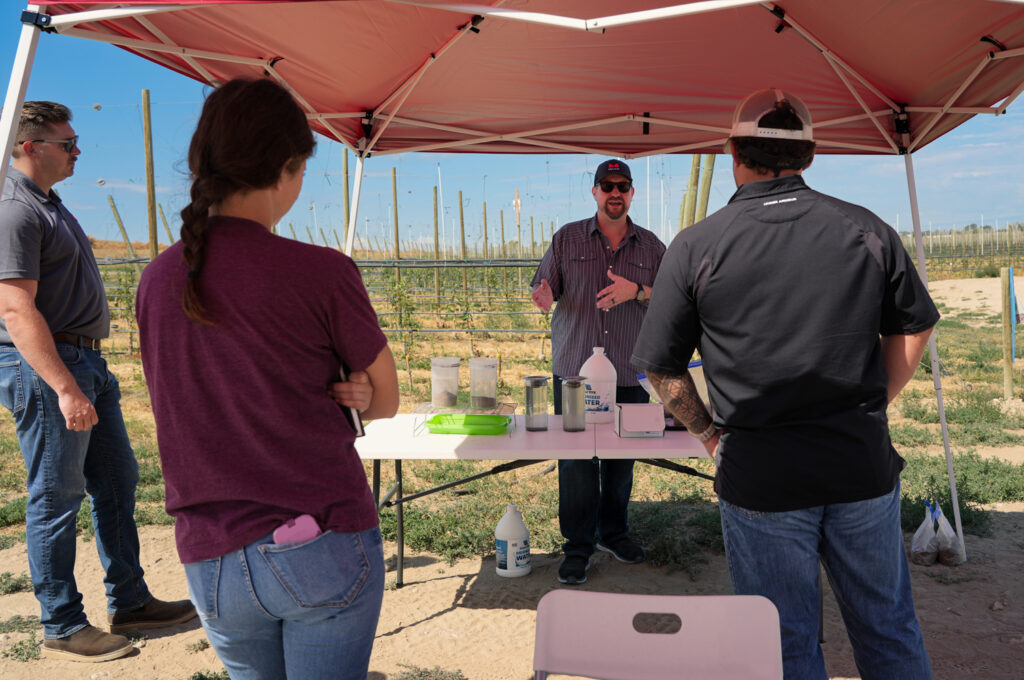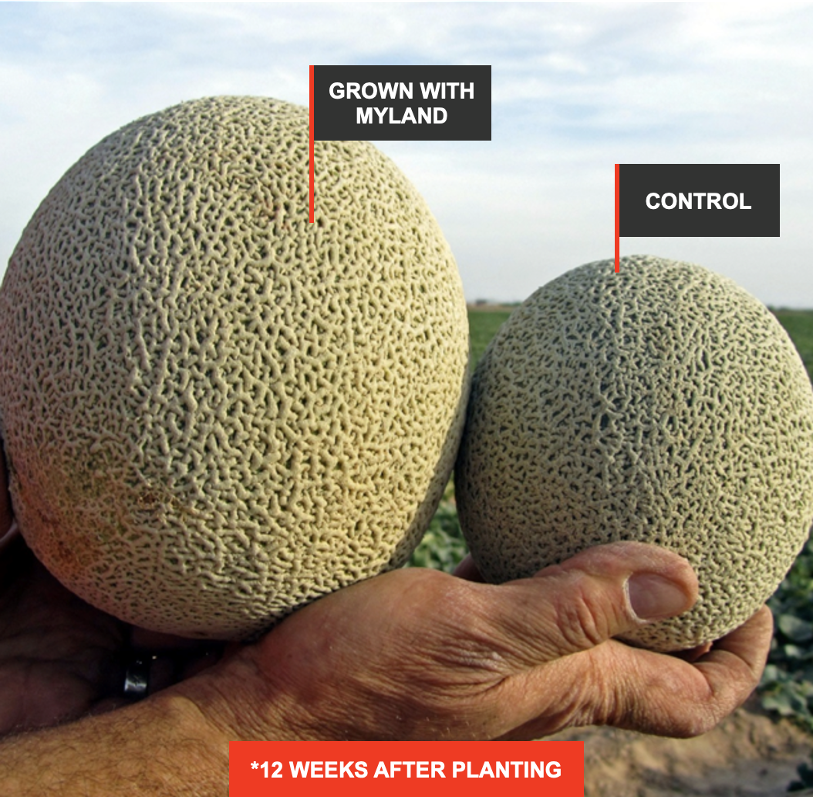
Conversation with Soil Specialist Greg Selby at MyLand: Healthy Soil Is Alive
Healthy soil is the starting point for every thriving farm. Strong soil supports healthier crops, makes better use of water, and stands up to stress. With the right care, healthy soil can support growers’ success year after year, helping to feed future generations.
Greg Selby, MyLand’s Senior Strategist of Grower Support and Education, has seen this in action across farms of all sizes. With a depth of experience in studying soil, Greg knows how life in soil can shape the health of both crops and land.
As a soil health specialist, Greg shares what healthy soil really means, the role of microorganisms in soil, and how to know when soil is working in your favor. Get his insights here:
Tell us about yourself and your experience as a soil health specialist.
I have more than 20 years of experience working as a soil ecologist, which is a role that studies the interaction between soil and the environment. In that time, I’ve partnered with universities and agricultural groups to research soil food webs in native systems. Working with the living organisms that have grown alongside local plants and soils gives us powerful insights. They reveal how soil breaks down minerals, cycles and holds nutrients, and builds soil structure.
My work as a soil health specialist spans commercial crops nationwide (including indoor and greenhouse cultivation), and I always try to emphasize the importance of soil health for the lasting stability and improved well-being of both plants and humans.

What are some of the most surprising things you’ve observed as a soil health specialist during your career?
Many positive surprises come from working with incredible people. Growers are always enthusiastic, especially as the health of their soil improves. I find that the healthier soil becomes, the more it motivates growers to learn more about how to keep it that way.
I’ve also found the resilience of native soils to be astonishing. These are soils that form naturally in a place over a long period of time. Even in low-input systems and extreme environments, soil can recover naturally when given the chance.
How do you define “healthy soil”?
Healthy soil is a living system whose biological, physical, and chemical components co-function to cycle nutrients, store and filter water, and build resilience.
Healthy soil is like a healthy human body: it’s alive and balanced so it can feed, hydrate, and protect plants just like a body feeds, hydrates, and protects itself. When the soil’s biological, physical, and chemical parts work together, they cycle nutrients, store and filter water, and build resilience against stress just like strong immune, circulatory, and digestive systems do in people.
Soil is not dirt. I like to say dirt is a four-letter word because it is dead, displaced soil, like what ends up on your shoes. Alternatively, soil is an organized living system that supports life.
How does soil health influence crop health?
Soil organisms decompose residues and mineralize nutrients, releasing nitrogen, phosphorus, and potassium in plant-available forms. Biological indicators, like microbial biomass, respiration, and enzyme activity, respond quickly and can correlate with improved fertility, structure, and ecosystem resilience.
Soil biology enhances the bounce back of an ecosystem after a disturbance. Like a rubber band, a more resilient ecosystem can stretch during trouble and then bounce back without breaking, keeping its basic jobs like providing food, shelter and water.
Will Beckwith, manager of Beckwith Farms in Texas, knows the impact of healthy soil. A longtime MyLand customer, he talks about how the health of his soil helped reduce salt buildup.
“In the past, we’ve always seen a white salt rim on the edges of our beds, especially around the plastic mulch. This year we didn’t see any of that. [The MyLand Service] improved our soil’s resilience, reducing the salinity that’s been a growing issue.”
What role do microorganisms like bacteria, fungi, and microalgae play in the health of soil?
As a soil health specialist, I like to think of the soil as a big neighborhood where plants live, and the bacteria and fungi are the helpful neighbors who keep everything running smoothly. Some neighbors are chefs who unlock the pantry (nutrients), so the plants always have food to eat.
Others are messengers who send text alerts (phytohormones) telling the plant when it’s time to grow new roots, sprout leaves, or ripen fruit.
Some are bodyguards who chase away bullies (disease-causing germs) that try to hurt the plants. A few are construction workers who make glue (polysaccharides) that holds the soil bricks together, so the plant’s home stays strong and safe.
Together, this whole team keeps the neighborhood healthy, happy, and growing.
How do soil organisms interact with each other, and why is that interaction important for growers to understand?
Soil organisms interact with each other in the soil food web—an underground community where different organisms work together and impact each other. It includes decomposers, pathogens, and predators, each playing a role at different levels of the food chain.
- Decomposers (fungi and bacteria) break down dead plants and animals into simple nutrients that other organisms can use.
- Mutualists (mycorrhizal fungi) form partnerships with plant roots and help them absorb water and minerals.
- Pathogens are harmful organisms that can cause disease in plants, while predators (nematodes, insects, and mites) help keep the numbers of other organisms in balance.
These interactions shape how soil functions. As a soil health specialist, I share this so growers understand how microorganisms control how quickly nutrients are released, how soil particles clump together into aggregates, how water moves through the ground, and how well soil can defend plants against disease.
When farming practices encourage healthy predator/prey relationships, it stabilizes the soil system. Nutrients are recycled more smoothly, plants grow with fewer problems, and outbreaks of pests or diseases are less likely.
What visible changes should growers look for if the health of their soil is improving?
Take this from myself and the whole team of soil health specialists at MyLand. Here are a few things to look for:
- Structure: Soil breaks into stable crumbs or macroaggregates that hold together yet crumble in hand. Additional digging into the soil becomes easier and has fewer compact layers.
- Roots and infiltration: Deeper, straighter roots with fewer “J-rooting” when the main root grows down, bends and turns back up to look like the letter “J”. Soil compaction or hard pans are normally the culprit, so you want to see water infiltrate faster with less surface ponding and erosion features.
- Smell: A pleasant earthy odor signals active microbial cycling. Alternatively, a sulfur/rotten-egg smell points to poor conditions and drainage issues.
What do you see as the main causes of soil degradation?
Sadly, many things can lead to the degradation of soil. Some include inappropriate land use, erosion by wind/water, salinization and waterlogging, overuse of fertilizers/pesticides, and compaction from heavy machinery. Working with a soil health specialist can help you identify the main issue. Unfortunately, all of those lead to a reduction in the soil’s fertility, structure, and water-holding capacity.
In arid and irrigated systems, salt buildup, dust storms, and water scarcity can further compound these risks, especially under rising temperatures and poor organic covers.
In your experience, how quickly can growers start to notice biological improvements once they focus on soil health?
Biological metrics like respiration, enzyme activity, and microbial biomass can change within weeks to months, well before many physical/chemical shifts are measurable.
What practices do you recommend to farmers who want to encourage more biological activity in their soils?
- Leverage microbes including microalgae–bacteria systems: This is shown to enhance soil activity, nutrients, and stress tolerance in challenging conditions.
- Maintain residues: This helps moderate temperature, reduce erosion, feed microbes, and prevent crusting and moisture loss.
- Use diverse rotations/cover-crop mixes (including legumes, grasses, and brassicas): This broadens root exudates, feed a wider microbiome, and breaks pest/pathogen cycles.
- Extend green periods with off-season covers: Sod phases (or multi-year crop rotation periods) deepen rooting and stabilize aggregates. Interestingly, long-term trials show greater gains with rotations plus organic inputs.
- Manage salinity and water: This improves drainage and irrigation management to avoid anaerobic conditions and salt accumulation.
- Minimize disturbance: Reduce tillage intensity to protect aggregates, fungal networks, and macrofauna habitats, preserving carbon and pore structure. When the soil is disturbed too much, it breaks apart soil clumps (aggregates), destroys the tiny thread-like fungi that help plants, and harms bigger soil creatures like worms and insects. By not tilling as much, the soil keeps more carbon stored, and the natural spaces (pores) in the soil stay open to hold air and water.

Healthier soil, from the ground up
As Greg Selby, one of MyLand’s skilled soil health specialists, reminds us, healthy soil is alive and constantly working with growers to support stronger crops and more resilient land. The science is clear, and the stories from growers are inspiring: when we put life back into our soil, the land gives back in abundance. When we nurture soil, we build resilience, conserve water, and create farming systems that can thrive for generations.
Whether you’re managing a large commercial operation or a small specialty farm, the path to healthier crops begins beneath your feet.
At MyLand, we are committed to helping growers unlock the full potential of their soil. By working with experts like Greg Selby, we bring practical, science-driven solutions that help growers see results quickly and sustainably.
▶️ Watch Greg share his insights in the video below:
If you’d like to learn how MyLand can help bring more life back into your soil, reach out to our team today.